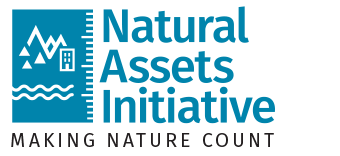First in a series of posts on activities of the 5 original community pilots since completing formal involvement with MNAI in December 2018
The starting place:
As an original MNAI pilot, the District of West Vancouver assessed costs to uncover streams that were channeled into underground culverts. The focus is relevant to many communities: creeks and streams are often buried underground in highly urbanized areas, yet the culverts that contain them were often built according to stream flow levels and precipitation patterns that now differ dramatically as a result of climate change.
Using a covered section of a tributary to Brothers Creek, the District assessed the stormwater services provided by, and the costs associated with, uncovering the stream and returning it to a natural state compared to replacing it with a new culvert that meets modern standards. They found that construction cost of uncovering, restoring and realigning the creek to a degree sufficient to manage stormwater would be $327,200, while replacing the underground culvert to current standards would be $300,000.
In other words, the project demonstrated that the stream, if naturalized, would provide stormwater management benefits commensurate with engineered infrastructure, with capital costs of restoring the creek to a natural state similar to those of upgrading the culvert to meet current stormwater requirements. Importantly, these benefits would be additional to any biodiversity, recreational or other value the stream might provide in an uncovered state.
Since MNAI:
The original stream project has stalled in the face of unforeseen conceptual and regulatory challenges.
It turns out that from a regulatory perspective, it is easier to keep a stream buried underground in cement pipes than to restore it to a natural state. For example, uncovering streams can: trigger regulations for setbacks from riparian areas that are not a factor if the streams stay covered; create conflicts with other land uses; and, raise financial questions in communities such as West Vancouver where land value is high. “The reality is that our regulatory frameworks were set up without considering natural capital or climate change, and can then become obstacles when we try to address these issues” notes Isabel Gordon, the District of West Vancouver Director of Financial Services.
This finding itself is relevant. “While the narrow daylighting project has stalled in the District for now, it has uncovered areas for research and public policy development,” notes Michelle Molnar, MNAI’s Technical Director. “Canadian cities will need regulatory and policy frameworks that enable and encourages them to adapt to and mitigate climate change. This project points to tangible areas that must be better understood.”
More promising yet, municipal natural asset management has started to flourish in other, potentially more far-reaching ways in the District since the original pilot finished.
What’s happening now?
The understanding that natural assets provide core services and form an essential part of asset management has led the District to launch an inventory of its natural assets.
The District, with support from Solstice Sustainability Works, is now assembling data on its foreshore, forests, waterways and parks; characterising services provided by certain of these natural assets; and, determining what valuation strategies might work. This inventory, once complete, will allow consideration of different asset management strategies that may be appropriate to ensure natural asset health and service delivery for the long-term.
What’s next
Once the inventory is complete, a presentation will be made to Council, with a variety of options for ensuring sustainable service delivery through effectively managed municipal natural assets.
Furthermore, the natural asset inventory is currently happening in parallel to the community’s process for engineered assets, but the possibility of integrating them in the months ahead.
The process will have challenges. Nature currently loses out in many development discussions because it has, effectively, a value of zero. In the District, it could still lose out in future if it is valued and found to be more expensive than engineered solutions, or less valuable than the (high) price of land. However, notes Ms. Gordon, “if a tangible value can be applied to natural assets, then there is a greater incentive to preserve them than if their value is zero, as is the case now. Furthermore, healthy natural assets provide many other benefits too, well beyond municipal services to communities.”

